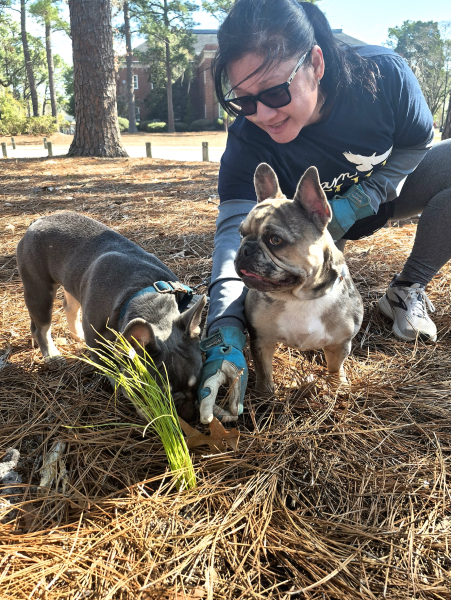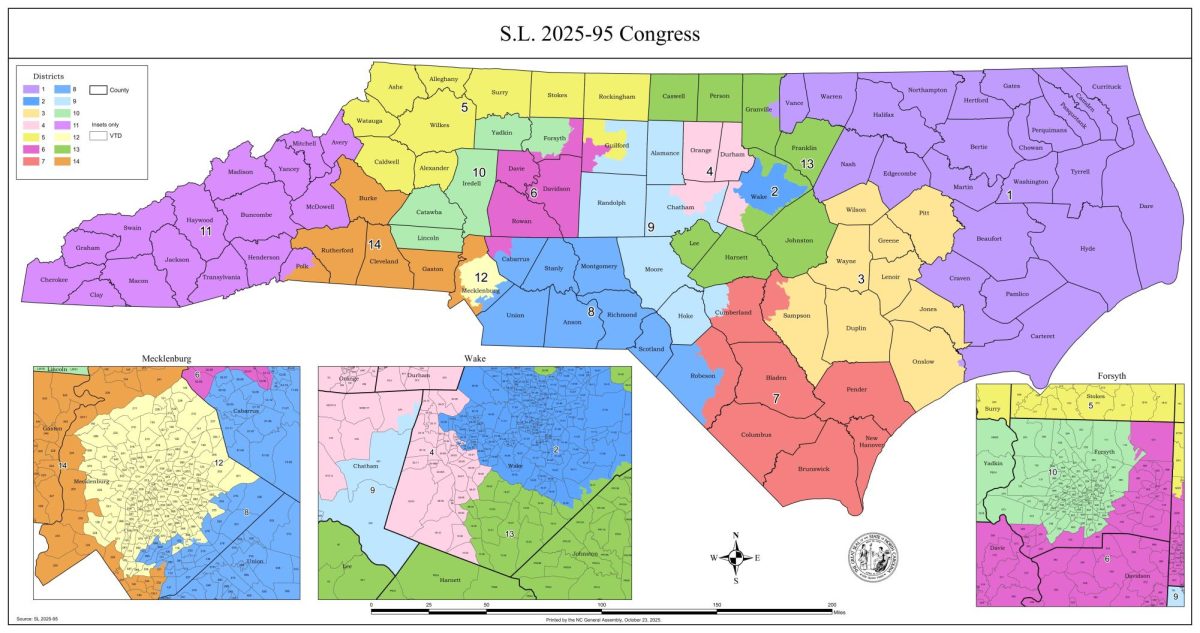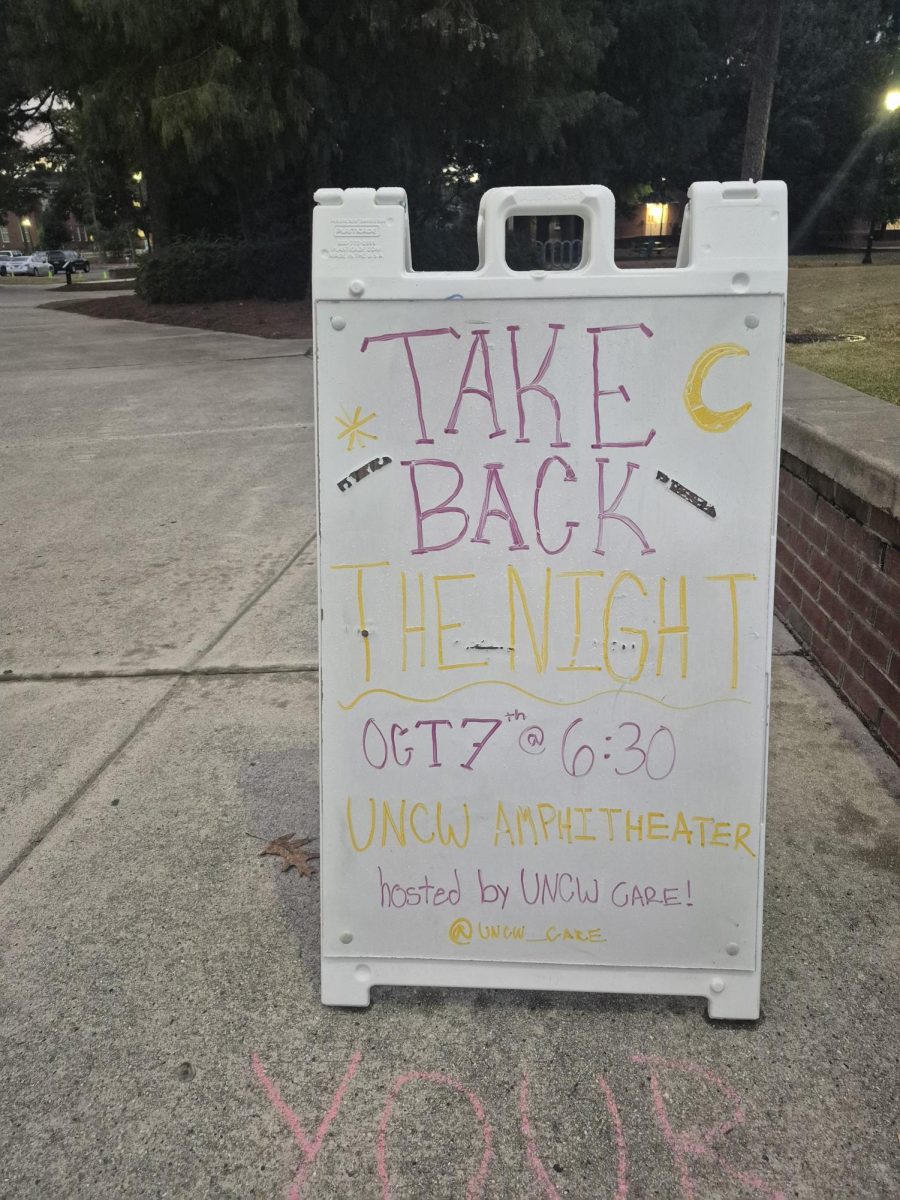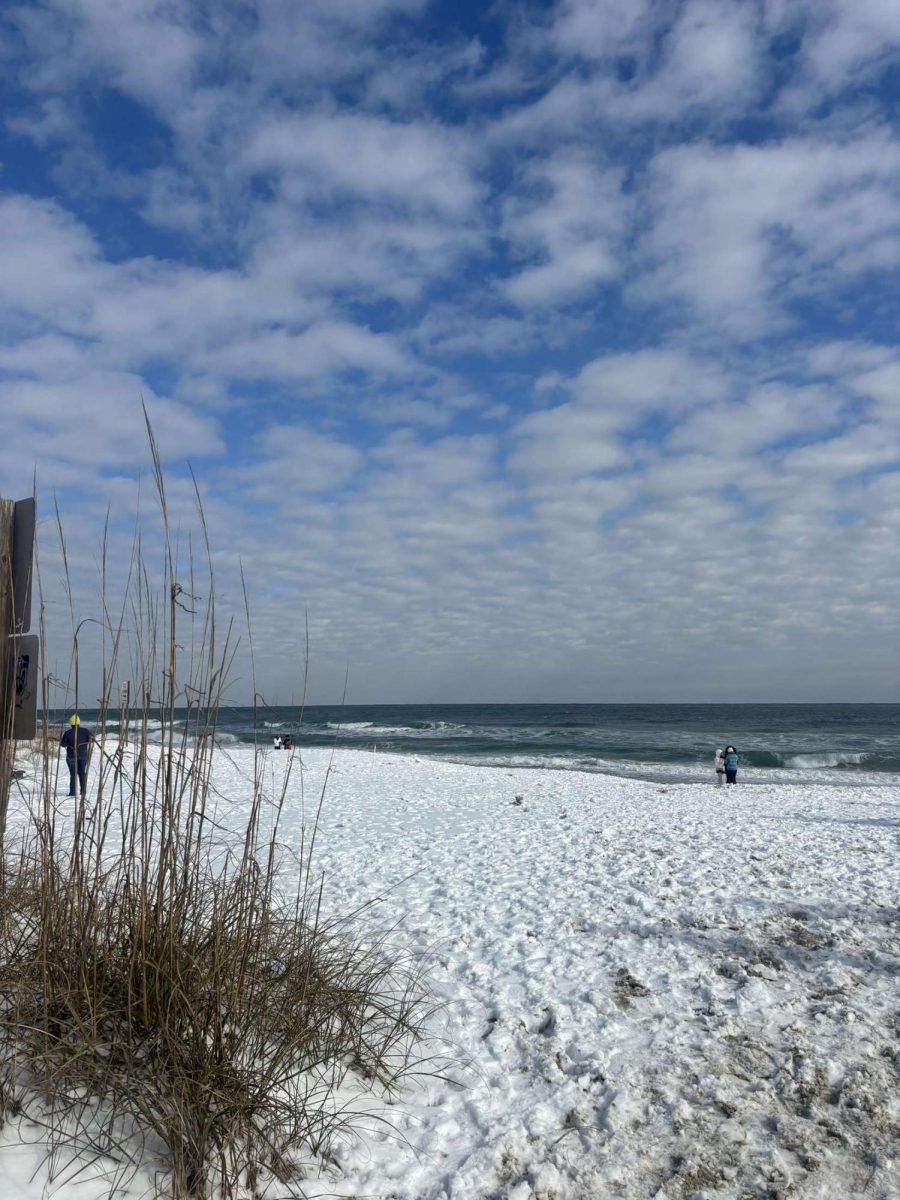
On Feb. 26, UNCW’s Office of Sustainability planted 80 saplings in the span of 30 minutes, with the help of 25 community volunteers (and two French bulldogs).
The area of UNCW’s campus was once a 600-acre pine forest. Since the university’s relocation to where it currently resides, almost all of this natural habitat has been urbanized, and as the school continues to expand, we can only expect more and more deforestation. Lucky for us, the Office of Sustainability has taken matters into their hands to ensure our campus stays green.
There are some nature preservation areas already established on campus grounds, like the Herbert Bluethenal Wildlife Preserve smack-dab in the center of UNCW. This preserve covers 10 acres and is home to numerous species native to the N.C. coast, like the carnivorous Venus Flytrap and Purple Pitcher Plant. This nature protection project was suggested by previous chancellor William Wagoner and passed by the university’s Board of Trustees in 1973. The area was deemed a wildflower preserve on Nov. 8, 1974, and has served as a natural classroom for the past five decades.
UNCW is also home to a large system of trails stretching around campus. There are four designated trail systems kept by UNCW, including the Bluethenal Wildlife Preserve, the Tar Kiln Trail, the Sustainability Trail and the Longleaf Trail. The City of Wilmington’s Cross-City trail, which can be taken all the way to Wrightsville Beach, can also be accessed on campus.
Lastly, the university was graciously given access to the Ev-Henwood Nature Preserve, a 174-acre tract of land located about 10 miles south of campus. This hub of conservation was donated in 1991 by land owner Troy Henry for educational and research use.
Bringing things back to campus, though, we have the Office of Sustainability. Located in Warwick Center, this office focuses on incorporating sustainable practices into modern learning and living communities. The program is supervised by Chief Sustainability Officer Feletia Lee and employs many students passionate about saving and restoring the local area.
Lee was responsible for the tree-planting event. This opportunity was posted on GivePulse, the university’s hub for service activities. Volunteers were instructed to show up at the designated planting area next to the Leutze/Bear Parking Lot at 11:00 am, where they would find shovels, gloves and 80 saplings.
At the top of the hour, Lee began instructing the few volunteers who had shown up early. She told us that UNCW had recently been recertified as a “Tree Campus,” a title given by the Arbor Day Foundation. This certifies that UNCW is actively working to restore the forest once sprawling in the area, and that the university values a healthy campus environment. The foundation also encourages global communities to nurture and celebrate trees, in hopes of creating a widespread impact on climate and communities.
The Office of Sustainability has also introduced a “tree-intern” position, which is currently held by student Madeline Izzo, who works as a peer educator for the office. Izzo has been tasked with planning events like planting saplings to keep UNCW green and acts as a student representative on the Campus Tree Committee, the group directly responsible for managing the trees on UNCW’s campus.
“Our campus trees are a very valuable asset to UNCW, not just environmentally, but economically, and therefore require lots of care and attention towards it,” Izzo says. “Our work at the Office of Sustainability and on the Campus Tree Committee seeks to serve UNCW’s mission as a university by creating opportunities for student engagement, educate on key environmental impacts, and encourage critical thinking about the effects that we as a community have on our climate.”
One of the reasons Sustainability put on this event is to replenish depopulation of Longleaf Pines, the species native to and originally occupying campus. These trees had become infested with beetles, and the only way to prevent the spread was to cut them down. With shovels in hand, the volunteers started planting three species of tree: longleaf pines, redbuds and red maples.
In the span of minutes, people walking by us volunteers stopped to join, including a community member who had taken her two 11-month-old French bulldogs out to enjoy the lovely weather. These two cuties were dubbed “the fertilization crew” and were very interested in the grass-like longleaf pine saplings that were planted.
These trees serve a multitude of purposes, such as filtering stormwater before it reaches our waterways and eventually the ocean, lowering temperatures of the surrounding area by (eventually) providing more shade coverage and, one of the largest ecological purposes trees have, sequestering carbon dioxide from the atmosphere and providing more clean oxygen to the people and animals that call Wilmington home.




















